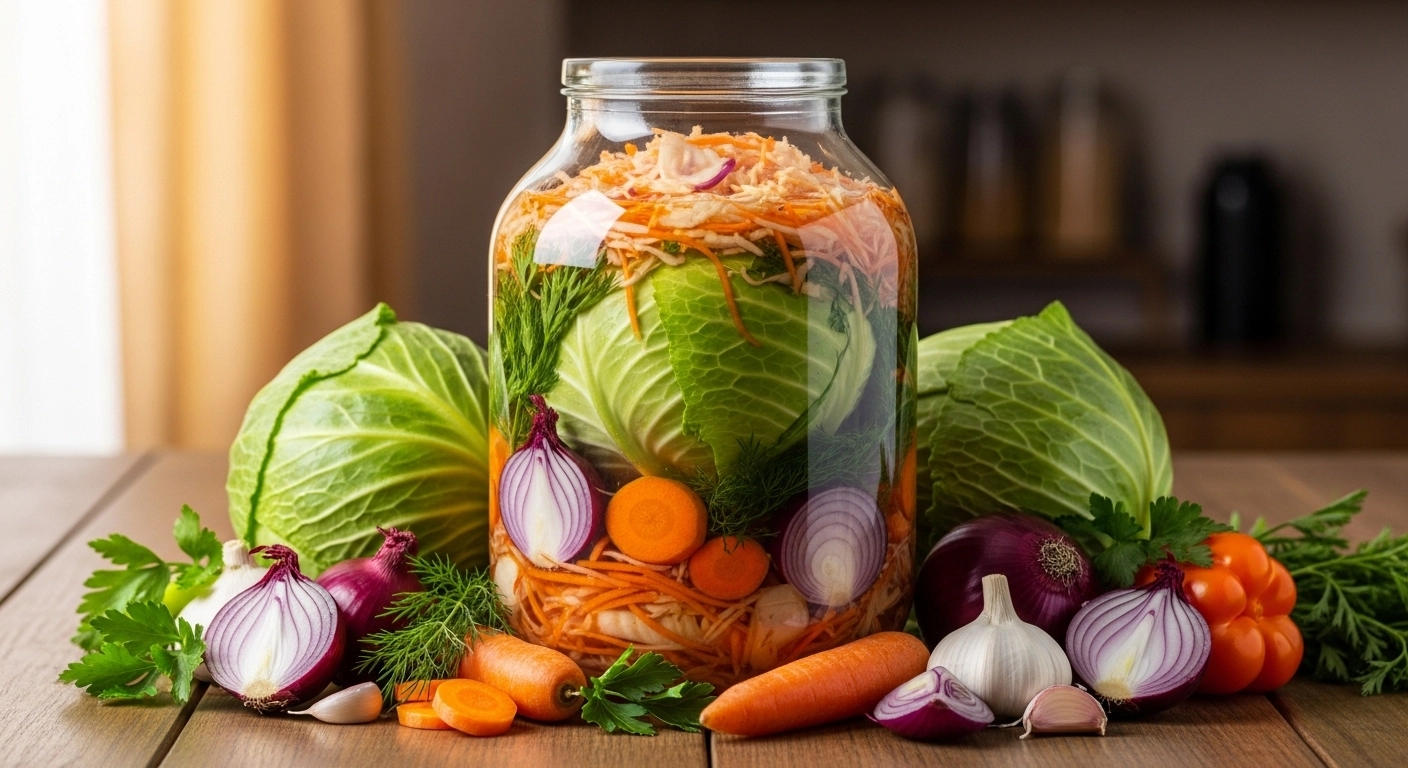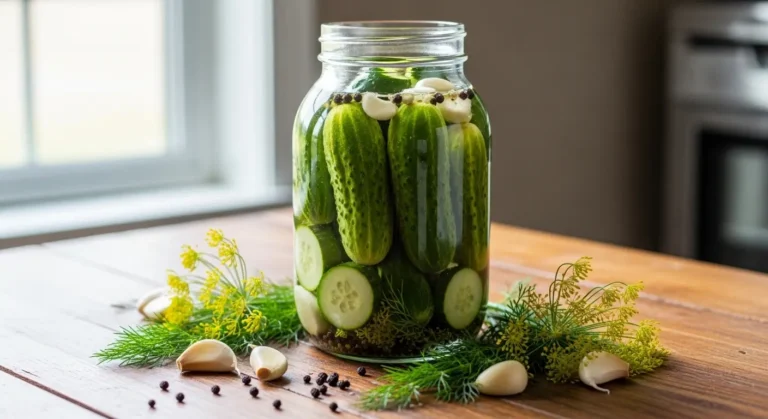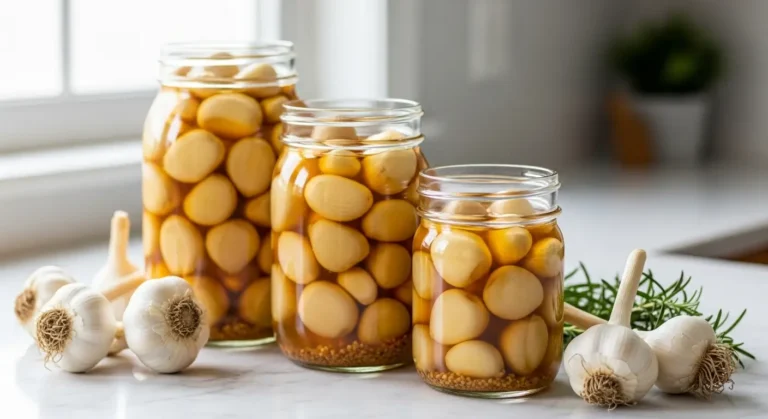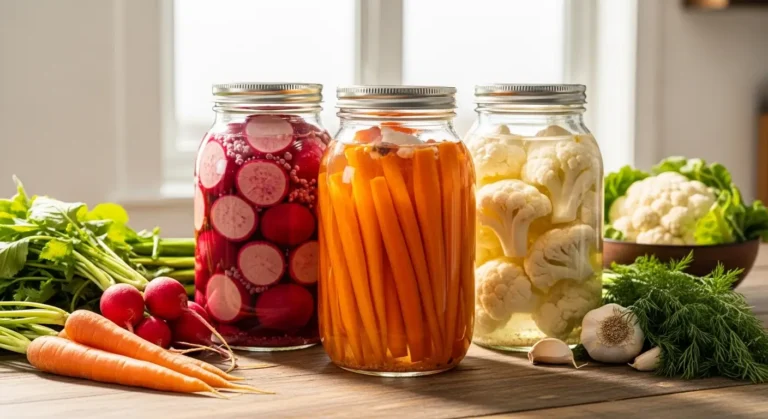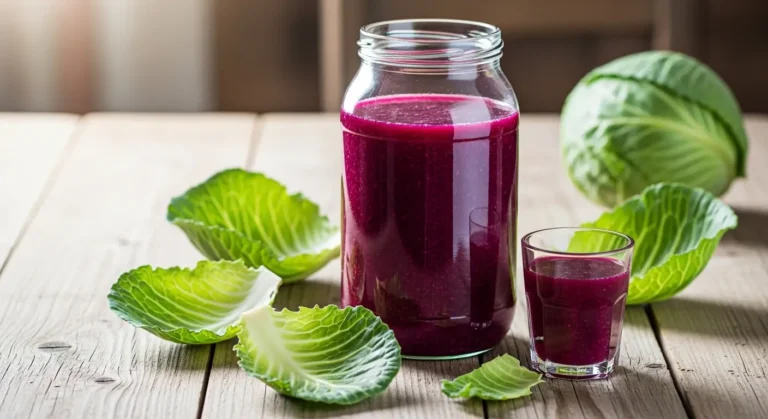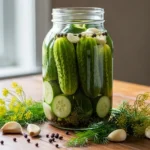So, you want to get into fermented cabbage blends? Honestly, it’s one of the coolest kitchen experiments you can do. You basically turn boring cabbage into tangy, crunchy, probiotic-packed superstars that’ll make your gut (and your taste buds) seriously happy. Whether you’re chasing those digestive benefits or just want to try some international flavors at home, these fermented veggie blends are ridiculously versatile and honestly kinda fun to make.
What’s the Deal With Fermented Cabbage Blends?
Think of fermented cabbage blends as a global family of naturally preserved veggies that start with cabbage and get dressed up with all sorts of tasty add-ins. The magic happens through something called lacto-fermentation—basically, good bacteria (naturally hanging out on cabbage leaves or added intentionally) munch on the sugars and turn them into lactic acid. That’s what gives you that signature tangy kick everyone loves.
The Old-School vs. New-School Approach
Traditional vs. Modern Fermentation Approaches
The OG fermentation methods just let wild bacteria do their thing—whatever was already chillin’ on the veggies. Modern fermenters like to be a bit more intentional and add specific probiotic strains to make sure things turn out consistently awesome. Both methods create that beneficial lactobacillus bacteria that keeps your digestion happy and gives you that perfect sour flavor.
Key Characteristics of Quality Fermented Cabbage
The good stuff stays crispy while developing those complex, interesting flavors. You’re looking for the right acidity level, no sketchy bacteria hanging around, and plenty of those good-for-you microorganisms that make the whole “probiotic” thing actually work.
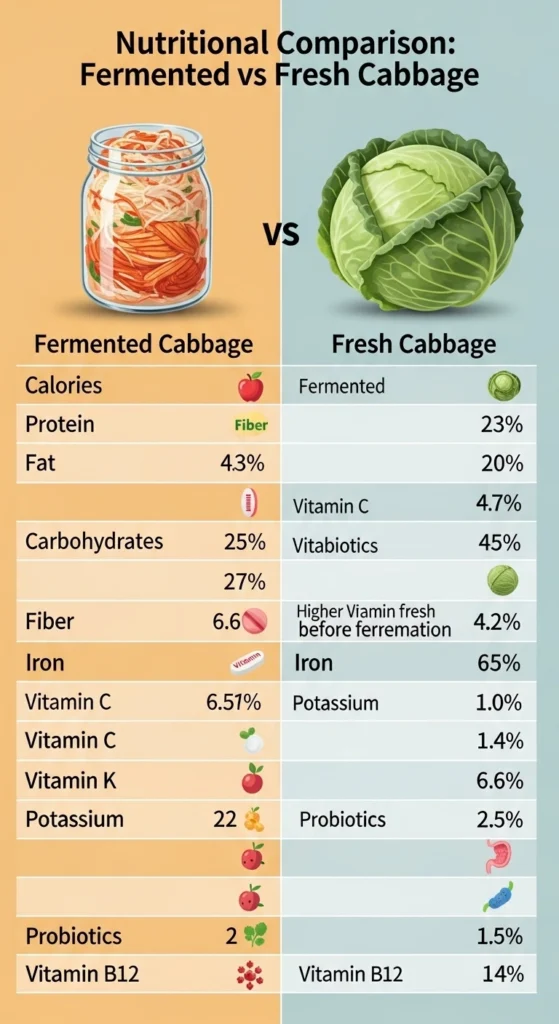
Global Variations of Fermented Cabbage Blends
Different parts of the world have their own spin on this whole fermented cabbage thing, and honestly, they’re all pretty cool.
German Sauerkraut Variations
Germany basically wrote the book on sauerkraut. The classic version is just cabbage, caraway seeds, and salt—but these days people get creative. You’ll see versions with ginger, onions, apples, or even strawberries thrown in to make things more interesting.
Korean Kimchi-Style Blends
Korea brings the heat. We’re talking garlic, ginger, chili peppers, and fish sauce for that serious umami punch. They often use Chinese cabbage and throw in stuff like radishes and carrots to get different textures and flavors working together.
Eastern European Mixed Ferments
The Eastern European crew loves mixing it up—literally. They combine cabbage with carrots, beets, and bell peppers to make these beautiful, colorful fermented cabbage blends. Russia, Poland, and Ukraine all have their own versions, and they pack way more nutrition and visual appeal than solo cabbage.
Why Your Gut Will Thank You
Okay, so fermented cabbage blends aren’t just tasty—they’re actually kinda good for you.
Digestive Health Support
Fermentation makes all the nutrients easier for your body to actually use, plus you’re getting probiotics that support gut health. Science says fermented cabbage helps keep your intestinal cells happy and protects them from inflammation damage. Pretty neat, right?
Enhanced Nutritional Profile
Fermentation is like a nutrient upgrade—it seriously amps up the antioxidants in cabbage while creating beneficial compounds like lactic acid and amino acids. You’re basically getting way more vitamins and minerals compared to raw cabbage.
Immune System Benefits
Here’s a fun fact: about 70% of your immune system is chilling in your gut. The probiotics in fermented cabbage blends help support that, which means your body’s natural defense system gets a boost. Regular consumption might help reduce inflammation too.
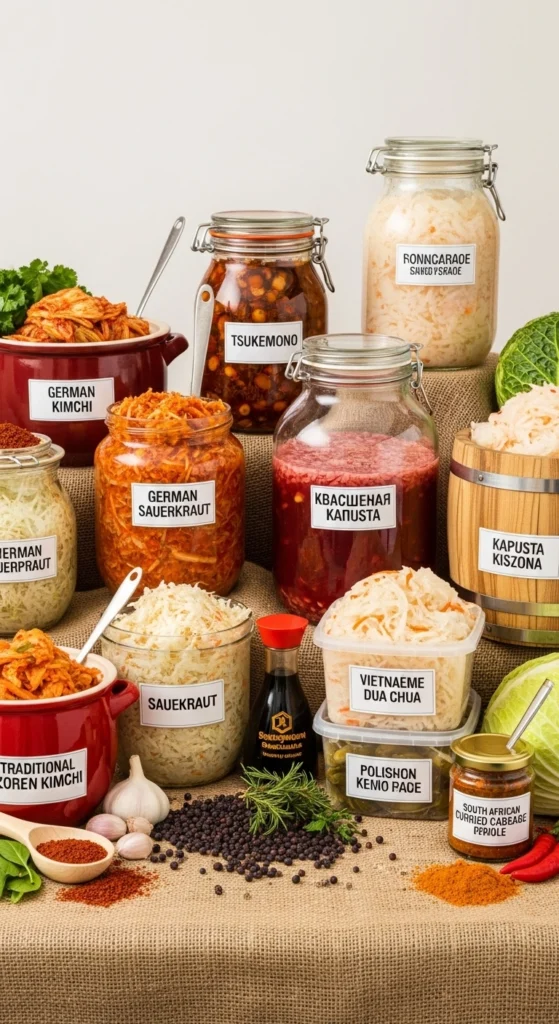
What You Actually Need to Make This Stuff
Success with fermented cabbage blends comes down to knowing what you’re working with.
Primary Cabbage Varieties
Different cabbages give you different results. Green cabbage gives you that classic sauerkraut vibe, red cabbage looks prettier and has even more antioxidants, and Chinese cabbage creates a softer texture that’s perfect for kimchi-style fermented cabbage blends.
Complementary Vegetables
You can throw all sorts of stuff in there. Carrots add sweetness and crunch, beets give you color and that earthy taste, radishes bring peppery notes, and onions add depth. Just make sure everything’s prepped the same way so it ferments evenly.
Spices and Seasonings
Traditional spices do way more than just taste good. Caraway seeds help with digestion, garlic’s got antimicrobial properties, and ginger adds warmth. For salt, you’re looking at about 2-2.5% of whatever veggies you’re using.
How to Actually Make This Stuff
Making fermented cabbage blends is straightforward if you just follow the steps.
Preparation and Sanitation
First things first—clean everything. Seriously, get all your equipment super clean. Peel off those outer cabbage leaves and save a few of the cleanest ones to cover your ferment. This keeps nasty bacteria from ruining your batch.
Vegetable Preparation Techniques
Shred your cabbage into strips about 3/8 to 1/2 inch thick. Grate or cut your other veggies to similar sizes so everything ferments at the same pace. Uniform cutting means consistent texture and flavor throughout your fermented cabbage blends.
Salt Distribution and Massaging
Sprinkle your salt evenly (remember that 2-2.5% ratio) and then massage the heck out of those veggies for 2-3 minutes. You’re basically breaking down the cell walls to get the brine flowing. Usually takes 15-30 minutes to get enough liquid going.
The Timeline: Watching Your Ferment Come to Life
Initial Fermentation Phase (Days 1-3)
The party starts with anaerobic bacteria creating an acidic environment. You’ll see bubbles, smell something slightly tangy, and the whole thing should look kinda alive. Make sure your veggies stay underwater—that’s important.
Active Fermentation Period (Days 4-14)
This is when things get interesting. Different bacteria take over, the acid keeps building, and your fermented cabbage blends start tasting actually sour. Taste it daily after day 7 to figure out when it’s just right for you.
Final Maturation (Days 15-21)
More bacteria (lactobacillus this time) come in to finish the job, making it even more acidic and flavorful. Good fermented cabbage blends stay nice and crispy while tasting perfectly tart.
Running Into Problems? Don’t Panic
Even people who do this all the time hit snags sometimes.
Managing Excessive Saltiness
Beginners often freak out because it tastes too salty early on. Here’s the thing—it mellows out as fermentation goes and the veggies soak up more brine. Just wait it out; it usually fixes itself.
Preventing Mushy Texture
Mushy fermented cabbage blends happen when you let it go too long, keep it too warm, or start with sad vegetables. Use fresh, crispy stuff and keep the temperature around 65-72°F. You’ll be golden.
Addressing Mold Growth
Sometimes mold shows up on the surface—usually because air got in there or something went weird. Just scrape it off and make sure everything stays under the brine. Problem solved.
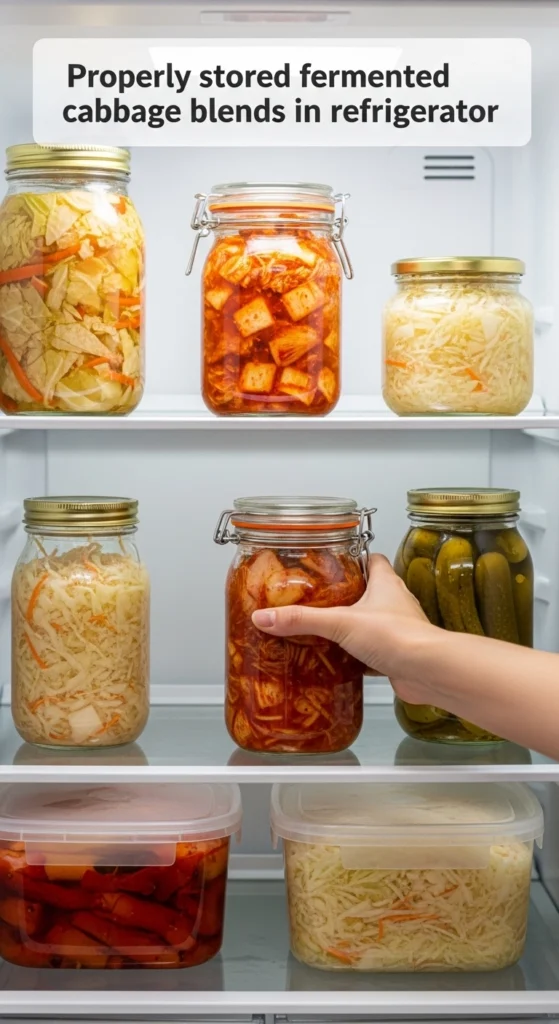
Keeping It Fresh and Using It
Refrigeration Guidelines
Once your fermented cabbage blends taste how you want, move them to the fridge. Cold storage basically hits pause on fermentation while keeping those good bacteria alive and your cabbage crunchy. You can enjoy it for several months this way.
Serving Recommendations
Start with small amounts—like 1-2 tablespoons—to let your digestion adjust to all those probiotics. Your gut needs time to appreciate the good stuff.
Culinary Applications
Throw fermented cabbage blends on sandwiches, toss them in salads, add them to grain bowls, or use them in traditional dishes like pierogi. The tangy flavor cuts through rich meats, balances fatty foods, and sneaks probiotics into basically anything.
Recipe VariationPrimary IngredientsFermentation TimeFlavor ProfileClassic GermanCabbage, caraway, salt2-3 weeksTangy, herbaceousKimchi-StyleCabbage, chili, garlic, ginger1-2 weeksSpicy, umamiEastern EuropeanCabbage, carrots, beets2-4 weeksSweet, earthyGolden BlendCabbage, carrots, turmeric3-4 weeksMild, aromatic
Frequently Asked Questions
What makes fermented cabbage blends different from regular sauerkraut?
Fermented cabbage blends are basically sauerkraut’s cooler cousin. They’ve got multiple veggies and spices instead of just cabbage and salt, so you get way more interesting flavors, different textures, and a better nutritional punch.
How long do fermented cabbage blends last in the fridge?
Properly made stuff lasts 6-12 months in refrigeration. The high acidity and good bacteria basically preserve everything naturally while still doing their probiotic thing in there.
Can I use different types of salt?
Go with non-iodized salt like sea salt or kosher salt. Iodine actually stops the good bacteria from doing their thing. And skip table salt with anti-caking stuff—it messes with fermentation.
Is it safe during pregnancy?
Yeah, fermented cabbage blends are generally safe when made and stored properly. That said, pregnant folks should probably check with their doctor before diving into fermented foods, especially if they’ve got digestive sensitivities.
How do I know if it’s gone bad?
If it smells off (and I mean actually bad, not the normal sour smell), looks slimy, or has mold you can’t just wipe off—toss it. Good fermented stuff should smell pleasantly tangy and stay crispy.
Can kids eat this?
Absolutely, just keep portions small and start with the milder varieties. The probiotics are great for their digestion, but introduce it slowly so their system doesn’t get overwhelmed.
Conclusion
Fermented cabbage blends are honestly one of the easiest ways to get into fermentation and seriously boost your probiotic intake. You’re taking raw veggies and leveling them up with fermentation, which makes all the good stuff more available to your body and adds those beneficial bacteria everyone keeps talking about. Whether you go full German, spicy Korean-style, colorful Eastern European, or invent your own crazy combo, you’re making something delicious that actually supports your digestive health. Plus, you get to pretend you’re a kitchen scientist, and that’s never a bad time.
Print
Fermented Cabbage Blends: The Complete Guide to Traditional and Modern Variations
- Total Time: 21 days
- Yield: 1 large jar (about 1.5 liters) 1x
- Diet: Vegan
Description
A complete guide to creating traditional and modern fermented cabbage blends — tangy, crunchy, and loaded with probiotics for better gut health.
Ingredients
- 1 medium head of cabbage (green, red, or Chinese)
- 2–3 carrots, shredded
- 1 small beet, grated (optional)
- 2–3 radishes, sliced thin
- 2–3 cloves garlic, minced
- 1 tbsp grated fresh ginger
- 1–2 tsp caraway seeds or chili flakes (depending on style)
- Non-iodized salt (2–2.5% of total vegetable weight)
- Filtered water (if needed)
Instructions
- Clean and sanitize all your equipment thoroughly.
- Remove outer cabbage leaves, saving a few clean ones to cover your ferment later.
- Shred the cabbage into 3/8–1/2 inch strips and prep all additional vegetables similarly.
- Combine cabbage and other vegetables in a large bowl and sprinkle evenly with salt (2–2.5% of total weight).
- Massage the vegetables for 15–30 minutes until they release enough liquid to cover them.
- Pack the mixture tightly into a clean jar or fermentation crock, ensuring vegetables are fully submerged in brine.
- Use reserved cabbage leaves to cover the surface and weigh down the veggies to keep them under the liquid.
- Cover loosely and ferment at 65–72°F.
- During days 1–3, bubbles and a light tangy aroma should appear.
- From days 4–14, flavor deepens — taste daily after day 7 to find your preferred tanginess.
- By days 15–21, your fermented cabbage blend will be mature, crisp, and deliciously sour.
- Transfer to the refrigerator to slow fermentation and store for up to 6–12 months.
Notes
Experiment with global variations: add caraway and apples for a German touch, chili and garlic for Korean spice, or carrots and beets for an Eastern European twist. Keep vegetables submerged and use fresh produce for the best texture.
- Prep Time: 45 minutes
- Cook Time: 0 minutes
- Category: Fermentation
- Method: Lacto-Fermentation
- Cuisine: Global
Nutrition
- Serving Size: 2 tablespoons
- Calories: 10
- Sugar: 1g
- Sodium: 150mg
- Fat: 0g
- Saturated Fat: 0g
- Unsaturated Fat: 0g
- Trans Fat: 0g
- Carbohydrates: 2g
- Fiber: 1g
- Protein: 0g
- Cholesterol: 0mg
Keywords: fermented cabbage, sauerkraut, kimchi, probiotics, gut health, fermentation guide
Sources
- UC Davis Department of Food Science and Technology – The Gut Health Benefits of Sauerkraut
- Applied and Environmental Microbiology – The fermented cabbage metabolome and its protection against inflammation
- Revolution Fermentation – 6 Fermented Cabbage Recipes From Around the World
- Hilda’s Kitchen Blog – Fermented Cabbage (Sauerkraut)
- Cultured Guru – Homemade Kimchi Inspired Spicy Sauerkraut Recipe
- PubMed Central – Anti-Inflammatory and Immunomodulatory Properties of Sauerkraut
- Make Sauerkraut – Easy Kimchi-Style Sauerkraut {Traditional Flavors in No-Time}
- Cleveland Kitchen – Fermented Cabbage: Kimchi vs. Sauerkraut
- Nutrition Advance – 5 Types of Fermented Cabbage and Their Nutritional Benefits
- WebMD – Health Benefits of Sauerkraut

